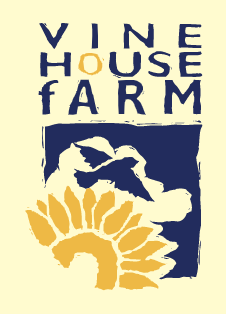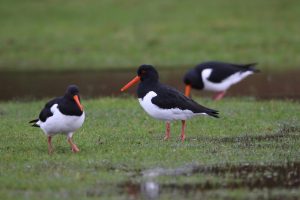
It has been the second warmest September I have recorded, 17°C, well above the average of 14.7°C, no doubt helped by those three days of 30°C we had. Rainfall has also been well above average of 42mm, with 77mm falling and unusually it all fell on only seven days.

We’ve been busy harvesting our red millet, when conditions have allowed and it came in very well at 1.5 tonnes per acre. The white millet ripens later than the red, and it wasn’t ripe before the rain and strong winds. Quite a bit was blown out and it only yielded about a tonne per acre.
Just the sunflowers are left to go through the combine. They are ripening off nicely, however Rooks have moved into one field and started to harvest them already.
Potato harvesting is going well, despite all the rain in mid September. Like most growers, we have a few acres less this year and some growers have even stopped growing completely, because of the poor returns we’ve had in the last few years. We’re hoping the price will stay up and they will be profitable this year. We’ve drilled many acres of cover crops again this autumn, consisting of several different seeds but the flea beetle has been very active and eaten most of the oil radish, leaving the crops a bit thin. Oil radish seems to be the main plant that has attracted Lapwings to breed on our direct drilled fields.
Last month, I talked about how quickly we could send our potatoes away and harvesting our corn crops has increased in speed, in much the same way. When manually harvesting crops by threshing drum, it would take three men on the stack to get the sheaves to the man feeding the drum. This would involve one man looking after the drum, one man bagging, one man taking the chaff away and two men stacking the straw on a stack. Nine people in total and they would expect to bag up one and a half tonnes per hour. A large modern combine now does that in two minutes! Loading a 29 tonne lorry today takes us just 20 minutes. Sixty years ago, it would have taken three men all morning to load two lorries with 16 or 18 stone bags of grain and they would need a rest too, when they’d finished loading the lorries.


Our summer visitors have slipped away very quietly as usual; it’s not easy to say when the last Warbler left as they skulk about in the undergrowth. It’s a lot easier to say when the last Swallow left – I have recorded this in my diary since 1960, and right up until the mid 1980s, I would see Swallows or House Martins every day, up until October 17th/18th. Since then, they have gradually been leaving earlier. This year, they left early September, hoping to find more flies on their way south as there weren’t many flies around here.
The last Swallow I have seen this year was on September 26th and I may well see one or two more, but they are not our Swallows. They are from further north, including some from Scandinavia. They arrive on the Lincolnshire and Yorkshire coast and follow it down to Skegness and on to Boston. They continue flying south west and I see them crossing the farm. They stop off for a few minutes wherever there are a lot of insects. On September 21st, there were over 100 Swallows around our chicken farm, in Baston Fen.
Swallows steadily work their way south, feeding as they go; the Swallows from the British Isles head for Natal in South Africa. Birds of prey do much the same, looking for food as they head south, but the majority of our summer visitors migrate at night. They head to southern Europe, where they fatten up, before crossing the Mediterranean and the Sahara in one flight, where they fatten up again before moving to their winter destination. Each species goes instinctively to their specific area, without help from their parents – isn’t nature amazing.
Our Turtle Doves have all left the enclosure, hastened by a Sparrowhawk that was spending too much time around the release pen. We don’t know whether they will be migrating or wintering in the UK. From previous years of releasing, we know at least two have spent the winter in Norfolk and we also know that three or four have returned to where they were released. However, it is known that Turtle Doves do not necessarily return to the place where they were hatched, but usually do return to breed where they bred the previous year. Because of these quandaries, we really need to have some birds fitted with trackers, which are expensive at around £3,000 and at the moment the Turtle Dove Trust doesn’t have the money. To make a donation, please go to: turtledovetrust.org.uk
Barn Owls have not had a good year because there have been so few voles around. Last year, there were plenty of voles available and more than half of the Barn Owls had a second brood. Most of the fledged young stayed around; a lot of Kestrels also fledged, and between them all they ate up all the voles. The young then moved away, leaving the adults sitting in the boxes with very little to eat. March and April were wet and windy, voles don’t breed successfully in wet weather, meaning the summer started off badly for Barn Owls. One third of our boxes reared one young, another third had Owls in them that didn’t breed and there were no Owls in the final third of boxes as several Owls died of starvation in the wet spring. This has happened several times before however, and their numbers have always been able to bounce back.



